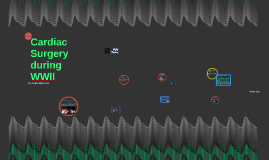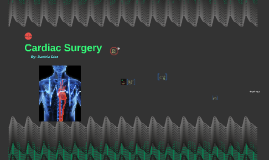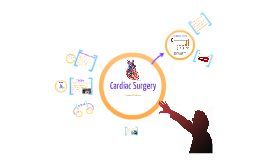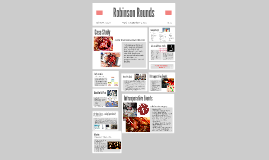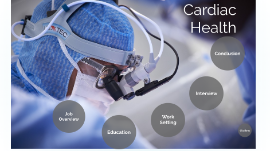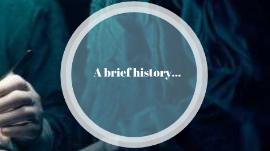Cardiac Surgery
Transcript: Left ventricular outflow obstruction from narrowing aortic valve is gradual Concentric hypertrophy allows LV to maintain SV Increase workload of LV secondary to stenotic valve causes LVH, decreased LV compliance (stiff ventricle) Diastolic dysfunction results from increased LV size, fibrosis, or myocardial ischemia Continued pressure overload eventually leads to decreased SV and CO Anesthetic Plan Medications: $1.25 Monday, September 14, 2015 Intraoperative Events Anesthetic Goals Medical History Transfer to ICU General: Amlodipine Valsartan Nifedipine Atorvastatin Bumetanide Fluticasone/Salmeterol Tiotropium Bromide Prednisone Albuterol Spriva Gabapentin Outcome Vol XCIII, No. 311 Diagnosis: Pathophysiology Labs and Additional Studies Back on CPB Attempt to place IABP via left femoral artery cutdown SFA repair with insertion of IABP Left axillary cutdown and insertion of Impella 5.0 (LVAD) Both decrease afterload and increased forward flow = augment CO Off bypass: Vtach/VF, shockx2, junctional brady, placement of AV pacer wires Avoid Lethal Triad (hypothermia, acidosis, and coagulopathy) Requires hemodynamic support Right Heart Cath: Severe pulm HTN 79/25 (42) mmHG, non-obstructive CAD, severe aortic stenosis and aortic regurgitation from prosthetic valve malfunction Echo: EF 60-65%, mild concentric LVH, diastolic dysfunction, severe pulmonary HTN, dilated LV Maintain NSR, CO is rate dependent due to fixed stroke volume Minimize drug induced myocardial depression by maintaining contractility Maintain intravascular volume, ensure suffient preoload for adequate CO The patient is very sensitive to abrupt changes in intravascular volume NOTE: A reduction in blood pressure or peripheral resistance does not decrease LV afterload because of the fixed resistance against ejection of blood However it does decrease coronary perfusion leading to an increased risk of myocardial ischemia and death Maintain or allow an increase in afterload CXR: Nml EKG: Junctional Bradycardia (44bpm) Airway: MP II TMD >3 MO >3 Neck FROM Dentition intact Placement of lines, ETT, TEE Surgery begins Right axillary artery cannulation Sternotomy Cardiopulmonary bypass Placement of aortic root Destruction of left coronary button CABGx1 SVG to LAD CPB >6 hours Attempt to go off "pump" Na 149 K 3.7 Cl 109 CO2 16 BUN 23 Cr 1.43 Glucose 101 Mg 2.5 Ca 8.6 H&H 8.3/22.9 WBC 7.8 Platelets 65 Coags NORMAL 12th hr into surgery... Subsequent Trips to OR x3 Hemodynamically unstable....epinephrine gtt, norepinephrine gtt, vasopressin gtt, milrinone gtt, LVAD and IABP support Received 7 pRBCs, 6 FFPs, 8 platelets, 2 units cryoprecipitate, 1000ml cell saver (not including what was transfused during CPB ~ 2000ml), 3000ml crystalloids, 1000ml albumin. Coagulopathy treatment: Factor VII, KCentra (pro-thrombin complex contains factors X, IX, VII, II, Proteins C & S, and anti-thrombin III), DDAVP All drips ready (uppers/downers) Blood in room Pre-induction arterial line left radial Defib pads placed prior to induction GETA Smooth controlled IVI Versed/Fentanyl Etomidate SUX/ROC EPI ready Inhaled nitric oxide CVC/PA catheter Be ready to go on BYPASS! Case Study 75/M presents for re-do aortic root replacement due to paravalvular leakage and prosthesis mismatch leading to worsening left ventricular heart failure and progressive shortness of breathe Intraoperative Events Aortic Root Replacement RE-DO 5'5" 87kg BMI: 32 Obese male 30 pack year smoker Still smokes cigars NKDA METs <4 HR: 52 BP: 124/32 RR: 16 SpO2: 99% T: 97.4F Aortic Stenosis Massive Transfusion Protocol #1 Next morning: sternal and left femoral re-exploration with evacuation of hematoma #2 Sternal exploration and washout, removal of IABP, HD catheter placement #3 Exchanged ETT, attempt to close and remove Impella.... HTN Severe aortic stenosis Hyperlipidemia Congestive heart failure CAD COPD w/ pulmonary HTN OSA w/ CPAP GERD Anemia Chronic renal insuffiency Peripheral neuropathy Robinson Rounds 18+ hours later....closing (open chest)






